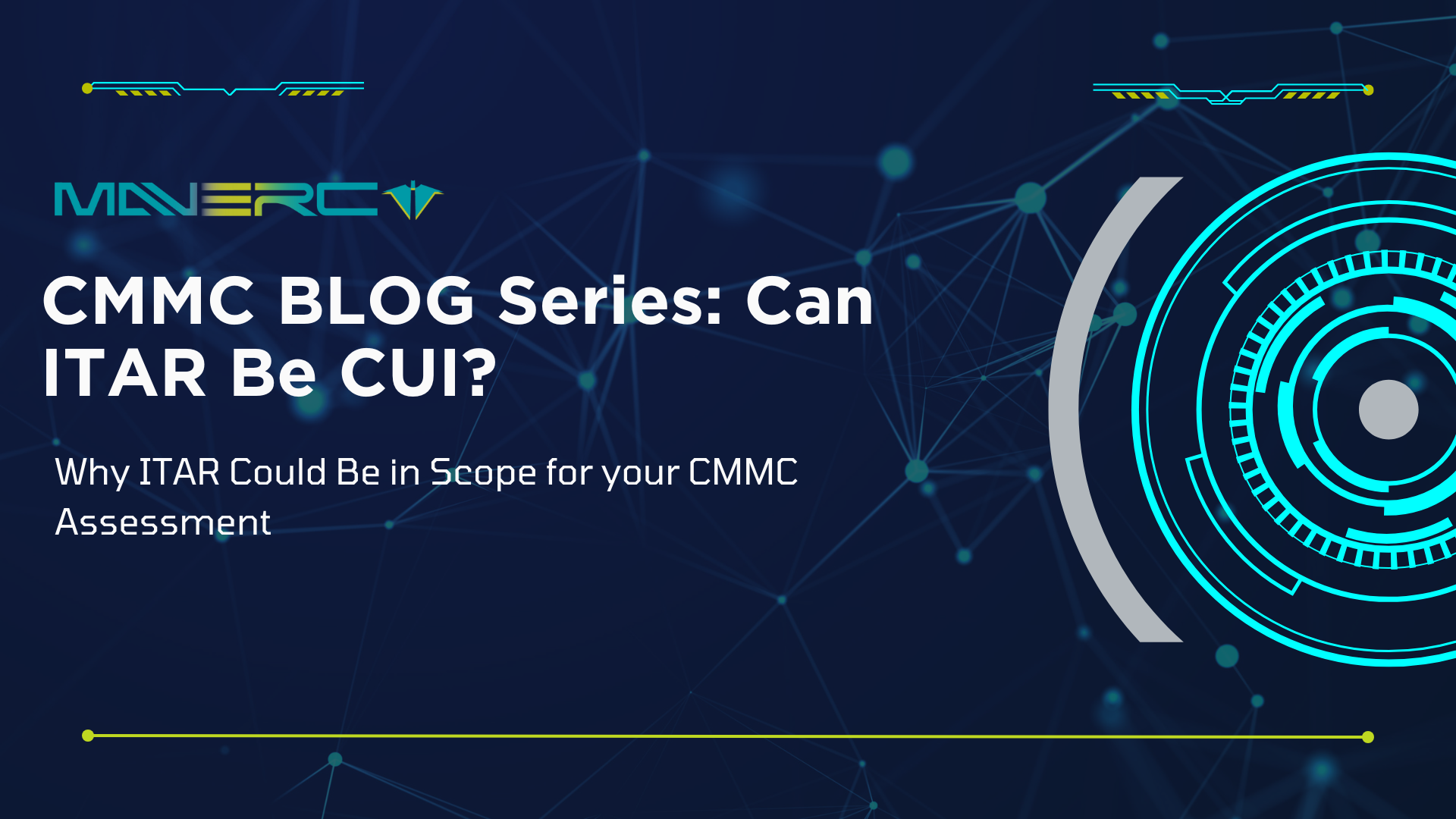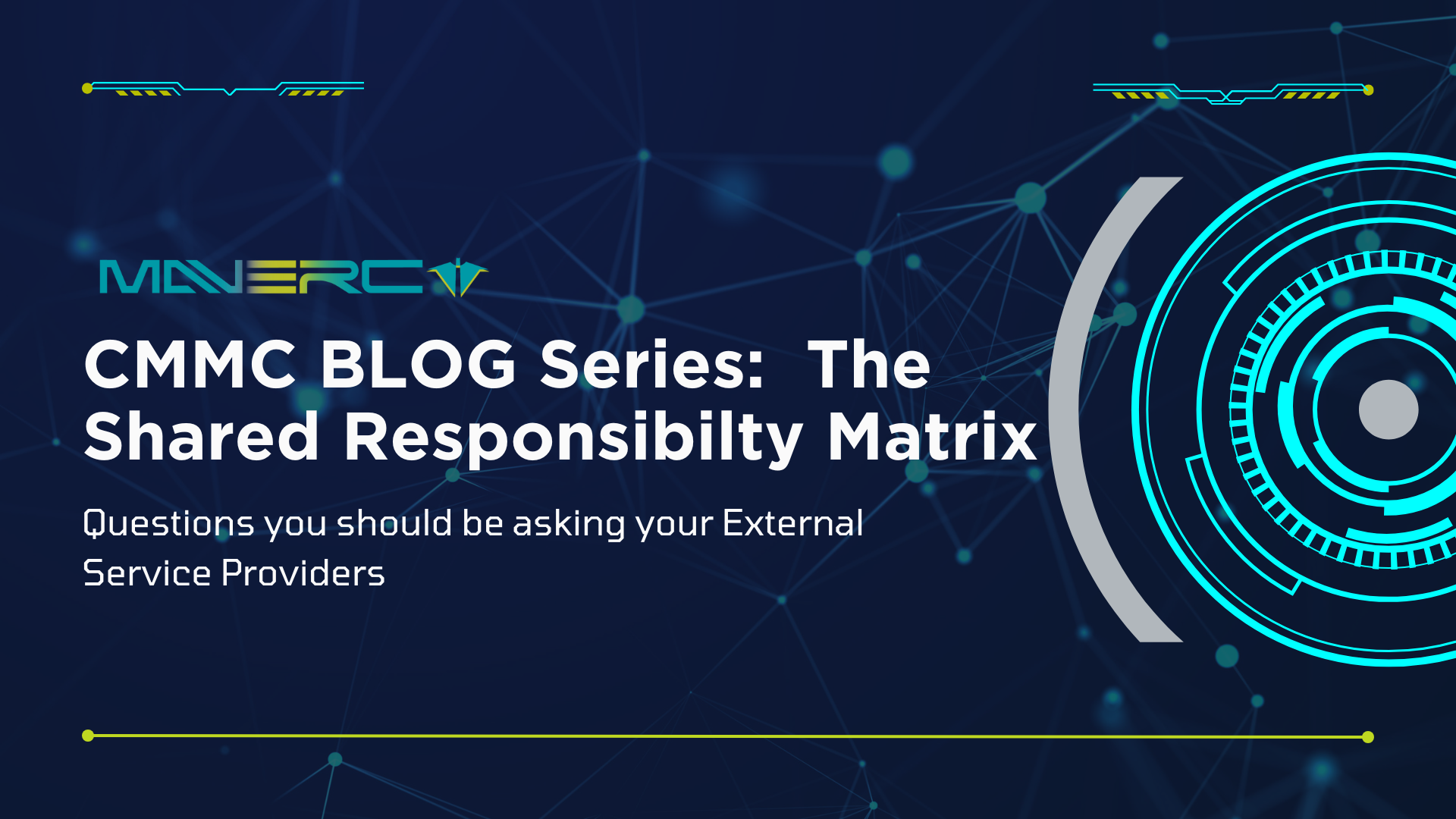Threat & Research Team Blog
- CMMC
- Vulnerabilities
- Government
- Security operations
- OT Security
- Compliance
- SOC
- Artificial Intelligence
- ThreatHunting
- Vulnerability Management
- Industrial Control Security
- Ransomware
- Cyber Security Compliance
- Zero-Day
- NIST 800-171
- Critical Infrastructure
- threat advisory
- Penetration Testing
- Emerging Threats

Can ITAR Be CUI? Why ITAR Could Be in Scope for your CMMC Assessment
Any defense contractors mistakenly believe ITAR-controlled data sits outside the boundaries of CMMC Level 2 — but that assumption could cost you your certification.
In reality, the National Archives and Records Administration (NARA) confirms that certain ITAR-regulated information qualifies as Controlled Unclassified Information (CUI Specified). That means if your organization handles ITAR data, it’s likely in scope for your CMMC assessment — and must meet strict safeguarding and dissemination requirements.
In this article, we explain how ITAR and CUI overlap, what the CUI Registry actually says, and why treating ITAR as CUI is both the safest and most compliant path forward for defense contractors.

What Does Effective Red Teaming Look Like?
Many organizations invest in penetration tests or red team exercises—yet walk away wondering why their security posture hasn’t improved. The truth is, not all offensive security programs deliver equal value. The difference comes down to execution. Effective programs align testing with real business risks, uncover meaningful attack paths, and produce insights leaders can act on—not just another compliance report In this blog Penetration testing experts at Maverc Technologies, breaks down what separates average testing from truly impactful offensive security. You’ll learn the building blocks of effective coverage, how to assess your organization’s maturity level, and why red teaming is the capstone of a resilient security strategy. We’ll also introduce the 5-5-20x framework—a practical method for aligning red team scenarios to your most pressing threats, adversaries, and critical assets.

Scoping CUI for CMMC Level 2 Certification
Defining the scope of your Controlled Unclassified Information (CUI) environment is the first and most critical step in preparing for a CMMC Level 2 assessment. Proper scoping ensures you know exactly which assets, people, and systems fall within your compliance boundary—and it can make the difference between a smooth certification process and costly setbacks. In this blog, we break down the scoping requirements, explain how to categorize assets, and share a practical checklist to help your organization build a clear, audit-ready System Security Plan (SSP).

CMMC Compliance Series: The CMMC Shared Responsibility Matrix
The CMMC Shared Responsibility Matrix helps businesses define which cybersecurity tasks they own and which are handled by service providers like AWS or Microsoft Azure. By clarifying roles in encryption, access control, and incident response, organizations can simplify compliance, strengthen security, and prepare for upcoming CMMC requirements

Maverc Technologies Secures Statewide Cyber Security Solutions Contract with the Florida Department of Management Services
Maverc Technologies secures State Term Contract No. 43230000-24-STC with the Florida Department of Management Services (DMS) to provide cybersecurity solutions for government agencies. Under this statewide contract, Maverc will deliver Endpoint Detection and Response (EDR), Identity and Access Management (IAM), Threat Intelligence, Penetration Testing, and more, helping Florida strengthen its digital security and compliance with NIST, HIPAA, and CJIS. Learn more about this strategic cybersecurity initiative.

Introducing Maverc’s Ai Penetration Testing Service : The Next Step in Securing Artificial Intelligence

CVE-2024-24919 - Zero-Day Vulnerability Exploiting Check Point Security Gateways
CVE-2024-24919, has recently been identified in Check Point Security Gateways. This high-severity information disclosure vulnerability is actively being exploited in the wild, posing significant risks to organizations using Check Point products. This blog provides a comprehensive overview of CVE-2024-24919, steps to mitigate its impact, and indicators of compromise (IOCs) to help detect potential exploitation.

Unveiling GrimResource: The Latest Microsoft Management Console Exploit for Initial Access and Evasion
Discover how the GrimResource technique exploits Microsoft Management Console (MMC) files, enabling attackers to execute arbitrary code with minimal detection.

Juniper Networks Addresses Critical Vulnerabilities in SRX Firewalls and EX Switches (CVE-2024-21591)
Juniper Networks has taken significant steps to address critical vulnerabilities in its SRX Series firewalls and EX Series switches. The most noteworthy of these is the remote code execution (RCE) flaw, CVE-2024-21591, with a CVSS score of 9.8. This vulnerability poses a serious threat, allowing unauthenticated attackers to exploit the J-Web configuration interfaces and potentially execute remote code or initiate a Denial-of-Service (DoS) attack.

Ransomware Exploits VMware ESXi Vulnerabilities
Ransomware attacks targeting VMware ESXi infrastructure have exhibited a predictable yet alarming pattern, highlighting the vulnerabilities and misconfigurations inherent in virtualization platforms. Despite the varied nature of the ransomware deployed, the sequence of attacks remains consistent, making ESXi a lucrative target for cybercriminals.

ConnectWise ScreenConnect Faces Attacks Following Critical Bugs - CVE-2024-1708 and CVE-2024-1709

Recent Exploits Target Citrix and VMware Vulnerabilities

Agent Tesla Malware Evolves: A Persistent Threat Exploiting Multiple Vectors
A recent cybersecurity analysis conducted by FortiGuard Labs sheds light on a sophisticated phishing campaign distributing a new variant of the notorious Agent Tesla malware.

Critical ownCloud Vulnerability Exposes Admin Passwords – Actively Exploited by Hackers
OwnCloud, a popular open-source file-sharing application, is grappling with a critical security crisis, as revealed in three security bulletins. The most severe flaw, CVE-2023-49103, scored a maximum CVSS v3 rating of 10, potentially exposing sensitive information, including admin passwords, mail server credentials, and license keys.
![Active Exploitation of Critical Security Flaws in F5's BIG-IP Software [ CVE-2023-46747]](https://images.squarespace-cdn.com/content/v1/6059ef5d59f1411908292205/1701065713843-PT3CBV8I7KWPRVLSNOH6/Copy+of+Add+a+heading%281%29.png)
Active Exploitation of Critical Security Flaws in F5's BIG-IP Software [ CVE-2023-46747]
This vulnerability may allow an unauthenticated attacker with network access to the BIG-IP system through the management port and/or self IP addresses to execute arbitrary system commands. There is no data plane exposure; this is a control plane issue only.

New research uncovers the most targeted and vulnerable assets are OT and Medical Devices
A recent study conducted by a security company has uncovered medical devices are most vulnerable to unpatched CVEs, and that operational technology assets face the highest number of cyber attacks.

Precision Threat Intelligence is Vital to Securing Industrial Control Systems and Operational Technology Environments
More than half a million new malware variants are discovered every single day. Once discovered, cybersecurity practitioners add them to industry-wide data feeds that fuel a wide variety of security technologies. But there’s a problem.
The volume of incoming threats is so high that most analysts can’t use this data in a timely manner. Manually querying the threat intelligence database and looking for the one threat that matches your particular operating environment can take hours – precious time that analysts don’t have.

Threat to Traders: WinRAR Zero-Day Vulnerability Exploited (CVE-2023-38831)
Hackers are exploiting a previously unknown flaw in WinRAR, a trusted software commonly used for file storage on Windows-based systems. This vulnerability allows them to target traders and steal their digital funds.

JOIN US AT ICS MIAMI NOVEMBER 2nd- 3rd
ICSMiami
A Critical Infrastructure Cybersecurity Conference— Join Cybersecurity Executives and Subject Matter Experts in Aventura, Florida to discuss the threats, use cases, and solutions needed to meet critical infrastructure cybersecurity needs.

CMMC 2.1 Explained: How is the Cybersecurity Maturity Model Certification Program Changing?
CMMC 2.1 Explained: How is the Cybersecurity Maturity Model Certification Program Changing? Find out how updated CMMC regulations impact security compliance for government agencies and their partners.


